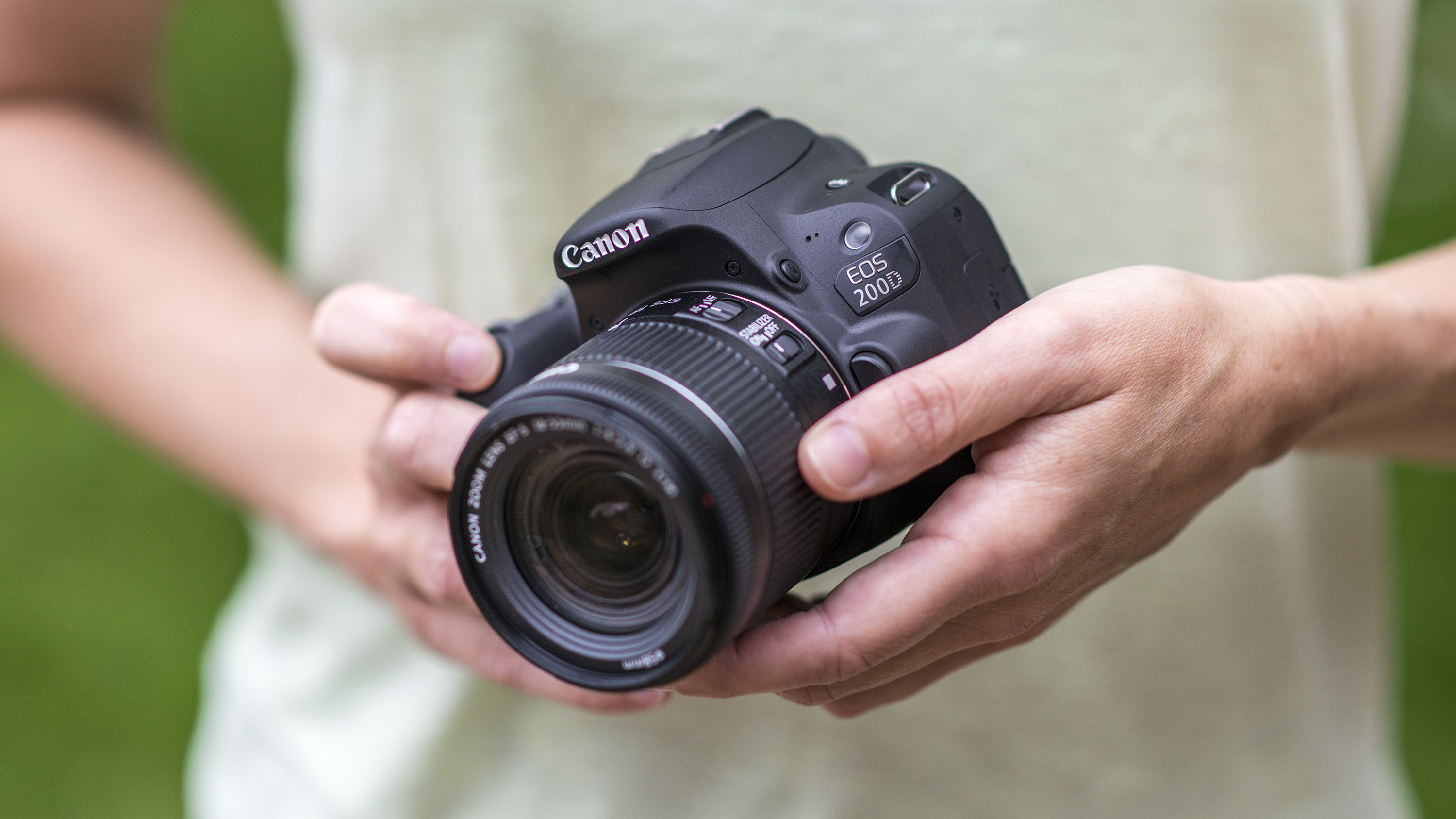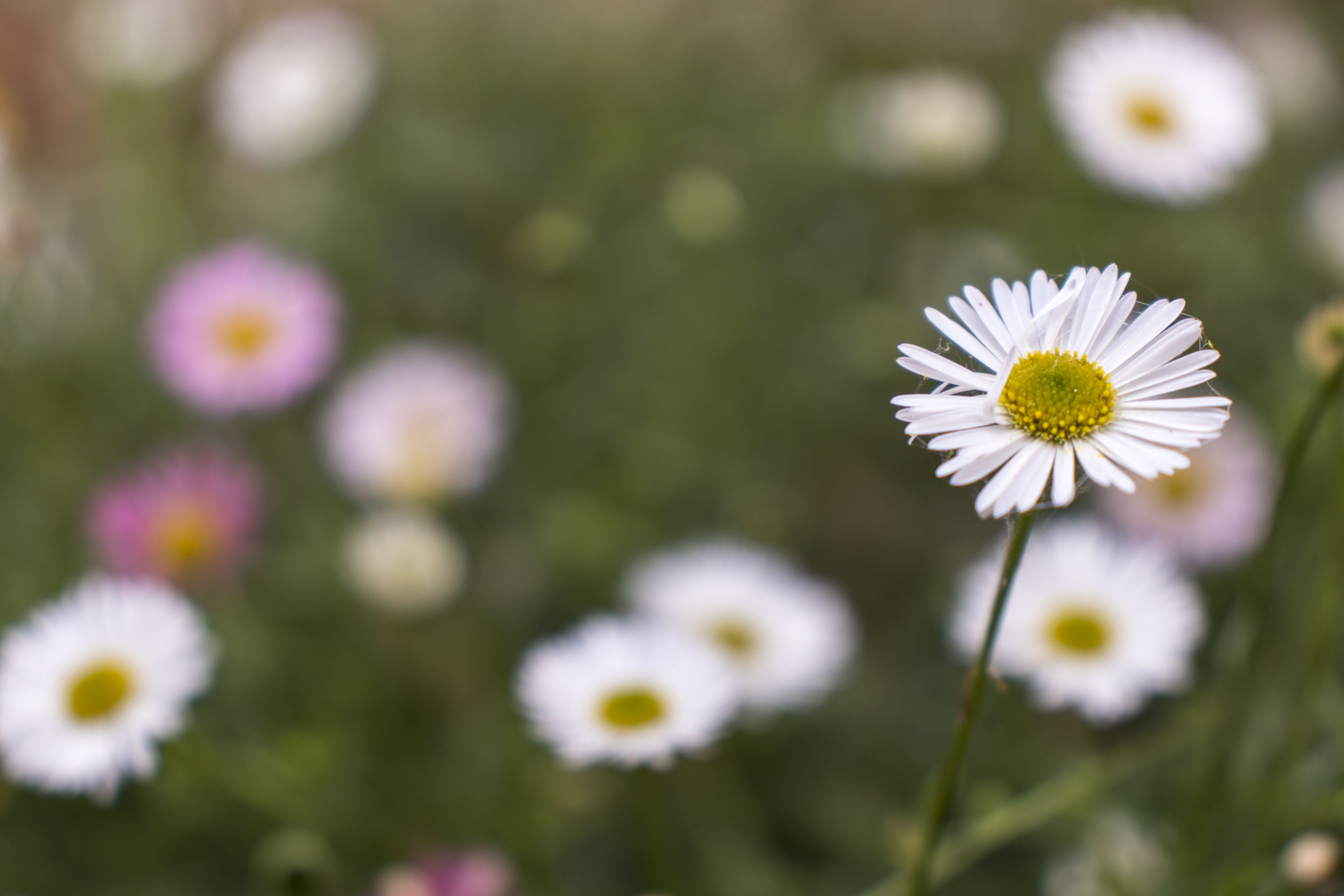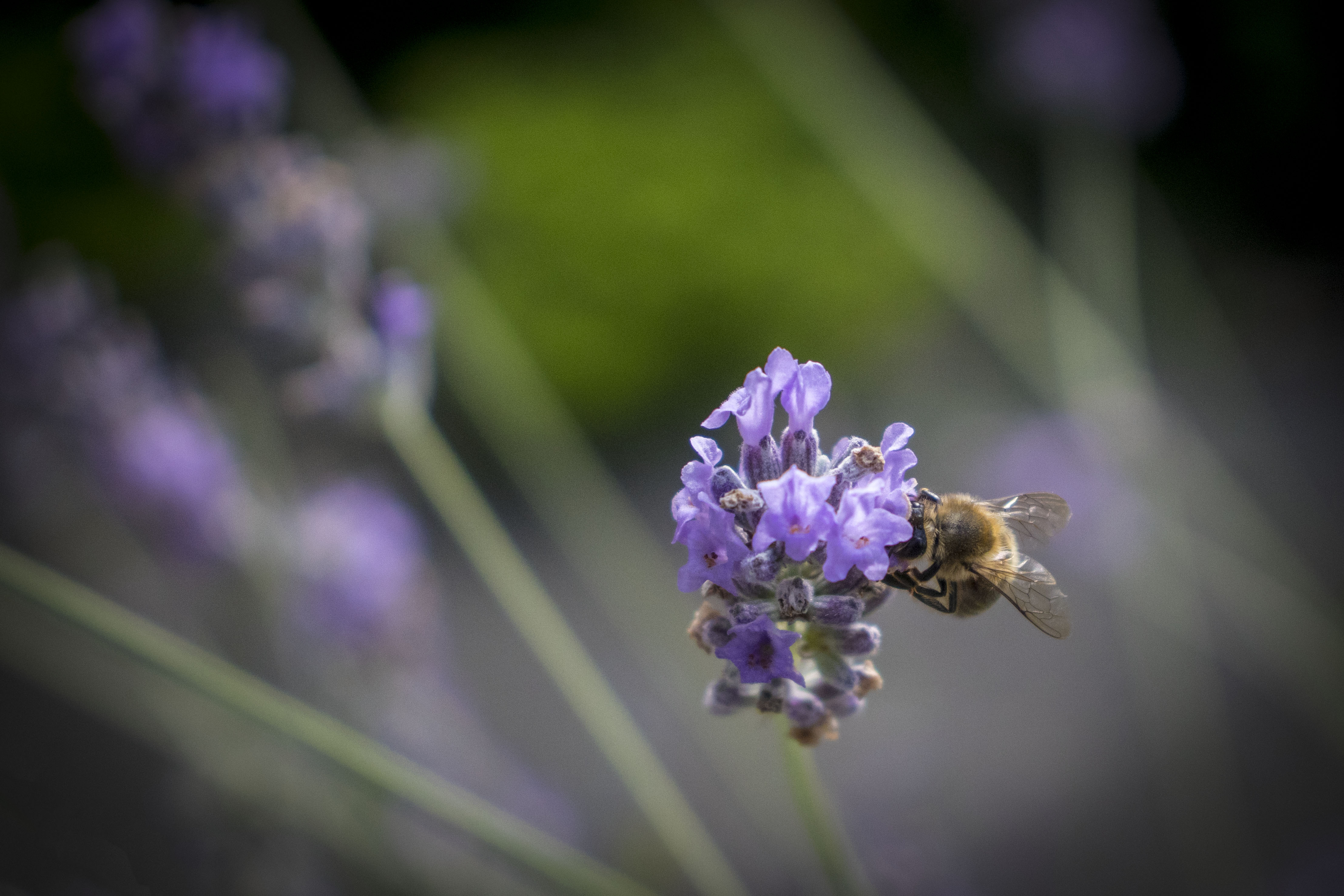Why you can trust TechRadar
Build and handling
- World’s smallest DSLR with a vari-angle screen
- Weighs 450g
- Three different finishes
Thanks to the inclusion of the vari-angle display, the EOS Rebel SL2 / EOS 200D can't take the crown away from the Rebel SL1 / 100D as the world's smallest DSLR, although it is the smallest DSLR with a vari-angle screen. And it's still incredibly compact for a DSLR, measuring 122.4 (W) x 92.6 (H) x 69.8mm (D) and weighing just 450g with a battery and card installed.
The Rebel SL2 / 200D is available in three finishes. There’s a white version and a silver/tan option, although most people will likely prefer the more sober black version, the matte finish on which looks particularly fetching against the silver-toned controls on the top plate.
However, thanks to a combination of polycarbonate resin and carbon-and-glass-fibre, the majority of the camera's surface finish suffers from the same plasticky feel we disliked on both the Rebel T7i / 800D and EOS 77D; it just doesn't feel that nice to the touch.

The hand grip was pretty much non-existent on the original SL1 / 100D in an effort to cut down its size, so it's great to see that the grip on the EOS Rebel SL2 / EOS 200D is now pleasingly deep, and it should offer enough support for most people. The material for the hand grip has changed though, with Canon reverting to the traditional-looking leatherette finish it uses for a lot of its DSLRs, rather than the more modern-looking dimpled texture employed by the Rebel SL1 / 100D.
Canon has overhauled the top plate for the Rebel SL2 / 200D, with the mode dial now recessed into the body, and has gone with a new power control that gives immediate access to movie recording. There are also dedicated buttons for connectivity and display, in addition to the ISO button. The ISO/Disp buttons are somewhat spongy, however, while the shutter release button has a certain hollowness to it.
Round the back the controls are pretty much identical to those on the Rebel SL1 / 100D. The rear of the camera is relatively uncluttered, with the biggest change being the vari-angle screen, with a little indent next to the viewfinder enabling you to pull the display out from the body. As we've seen on other Canon cameras, the touchscreen interface is perhaps the best around, offering a polished user experience for both shooting and reviewing images.
Autofocus
- 9-point AF, 1 cross-type AF point
- Dual Pixel CMOS AF system
- Touch focus
While there have been numerous improvements elsewhere, the 9-point AF system from the Rebel SL1 / 100D gets another run out in the EOS Rebel SL2 / EOS 200D. Notwithstanding the fact that this camera is aimed at new users, this omission is a bit of a disappointment, especially as both the Rebel T7i / 800D and 77D use a new 45-point AF system.
Sign up for breaking news, reviews, opinion, top tech deals, and more.
The points are arranged in a modest diamond formation, but while they're reasonably well spread out across the frame there's just a single cross-type AF point. For comparison, all the Rebel T7i / 800D's 45 AF points are cross-type. Why's that such a big deal? Cross-type sensors are sensitive in both the horizontal and vertical planes, so when the camera's focusing it's more likely to lock onto its target than a sensor that's sensitive in just one plane, which can mean you have to rotate the camera to achieve focus.


For general photography the AF system performs fine; in our tests it proved its worth in both good light and even in darker indoor conditions, and focused on low-contrast subjects better than expected, but should you want to press it into more challenging situations, such as tracking moving subjects, you'll be left wanting.
There is one improvement in this area, with the arrival of Canon’s Dual Pixel CMOS AF system, which allows the camera to use phase-detect AF for faster focusing speeds in live view mode and during movie recording; many DSLRs at this price point rely on contrast-detect AF for live view shooting, which, while very accurate, can be slow. Focusing is smooth and fast, and easily a match for mirrorless rivals.
Current page: Build, handling and AF
Prev Page Introduction and key features Next Page Performance and image quality
Phil Hall is an experienced writer and editor having worked on some of the largest photography magazines in the UK, and now edit the photography channel of TechRadar, the UK's biggest tech website and one of the largest in the world. He has also worked on numerous commercial projects, including working with manufacturers like Nikon and Fujifilm on bespoke printed and online camera guides, as well as writing technique blogs and copy for the John Lewis Technology guide.
